Midyear Update: Defensive Portfolio Repositioning May Benefit U.S. Property Market in Second Half of 2016
The U.S. office market continued to record strong demand as measured in both occupancy and rent growth at midyear, and analysts even found optimism in the slowing trend in investment sales activity seen year-to-date.
Office net absorption rebounded from a slow first quarter, matching year-earlier levels, and vacancies continue to fall to a cyclical low in the second quarter of 2016. Although easing slightly this year, office rent growth ended the quarter with a strong 4% increase, according to Walter Page, director of U.S. Research, Office for CoStar. First-half office sales were down 20% from the same period last year, largely reflecting the smaller pools of buyers for marketed properties and diminished investor appetite for higher-risk assets, Page said.
“While the 10-year Treasury rate has hit a record low, our view is that cap rates for real estate in general are likely to remain fairly flat,” said Page, who will elaborate on office market trends in CoStar’s Midyear 2016 Office Market Review and Forecast presentation on July 21.
The generally optimistic views of the U.S. office market were shared by others, including Colliers International Chief Economist Andrew Nelson, who said investment sales activity in the office sector remains at healthy levels relative to historical averages, and could see a further boost from the recent Brexit vote.
“U.S. property markets could benefit from potential capital flight out of Britain and Europe generally, in part as a response to last month’s Brexit from the European Community,” Nelson said.
Evidence is beginning to emerge of an uptick in foreign buyers seeking the security and economic stability of U.S. office and other commercial property markets, including warehouse, as a result of the Brexit. And some of those international bidders and buyers are popping up in markets outside the DC/New York City/San Francisco triangle, such as downtown Chicago and Austin.
In one instance, a number of foreign bidders were reported to have put in offers for 1K Fulton, a 10-story, 531,190-square-foot Class A office building that serves as Google’s Midwest headquarters in Chicago. American Realty Advisors beat out others to buy the property from Sterling Bay for a reported $257 million.
Martha Shelley, senior portfolio manager for American Realty, said the deal is an example of defensive positioning of its portfolio by investing in core assets in major markets.
“We believe that this is the most effective approach at this point in the market cycle,” Shelley said. “We were attracted to this asset because it has long-term leases with quality tenants such as Google.”
Foreign Capital Can Also Play Good Defense In US CRE
There is also mounting evidence that events in Europe and around the world are making U.S. property more appealing to investors interested in pursuing similar defensive strategies.
“Shortly after Brexit, I received several calls from international investors seeking more information about Texas commercial real estate,” says Jim Young, CCIM, a broker at Longbow Real Estate Group in Austin. “Several U.K. investors tell me that they see U.S. real estate as a safe haven. Given low interest rates on commercial real estate loans, and commercial rental rates in Central Texas that continue to rise, I expect there will be even more of an uptick in European and global investor activity,” Young added.
Capital flows into the office sector remains strong and interest in top-quality properties with stable tenancies and minimal lease rollover risk remains high, Marcus & Millichap reported in its midyear office outlook.
While institutional investors remain focused on core property in major markets, more risk-tolerant investors are targeting assets with re-leasing opportunities, according to William E. Hughes, senior vice president with Marcus & Millichap Capital Corp.
While a decrease in office sales was expected this year following 2015’s breakneck pace, steady debt and equity flows and improving asset performance have continued to generate steady sales activity, and investors continue to see upside potential in office properties, which are the only major property type that has yet to reach pre-recession peak pricing levels.
Broad-based employment gains among people who work in offices, with more job growth expected this year, should continue to push office performance. Industry experts believe both urban and suburban office markets will likely continue to draw investor attention as yields in other property options have tightened significantly.
Average office pricing has risen nominally from a year ago, while the average cap rate was essentially unchanged in the low-7% range. Office investors saw a slight rise in first-year returns in primary markets, contributing to a narrower spread between cap rates in tertiary markets.
Tenant demand kept pace with new office construction despite a deceleration in the first half of the year linked to the growing economic uncertainty.
“U.S. businesses have had many curveballs thrown at them this year. Concerns over the health of China’s economy, equity market volatility, weak U.S. GDP growth, now Brexit – many reasons to at least tap the brakes on expansion plans,” Thorpe said. “But overall, the office leasing fundamentals are holding up extremely well, and the secondary markets are really starting to hit their stride.”
By Randyl Drummer
